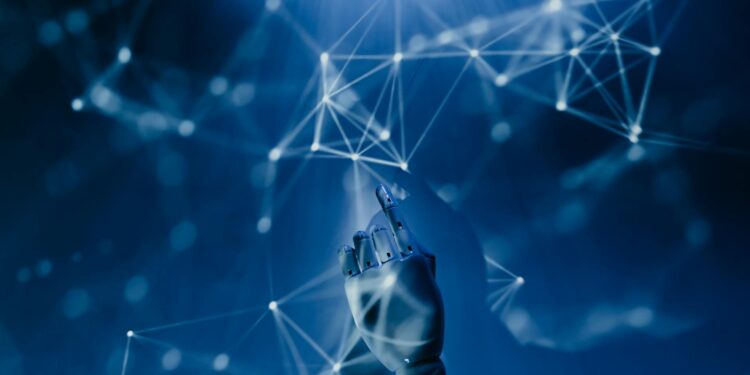The ongoing discourse in the technology sector extends far beyond the mere existence of artificial intelligence. While AI itself continues to capture headlines, the truly revolutionary shift lies in its rapid evolution from passive, reactive tools to dynamic, proactive, and deeply personalized agents. This profound transformation isn’t just an incremental update; it signifies a fundamental redefinition of our relationship with technology. We are moving from a world where we command machines to one where they anticipate our needs, learn our preferences, and seamlessly integrate into our workflows. This article will explore the pivotal journey of AI, tracing its path from simple response mechanisms to intelligent partners that are reshaping the very fabric of how we work and interact.
Beyond the chatbot: The genesis of reactive AI
Reactive AI represents the initial widespread application of artificial intelligence, characterized by its direct response to explicit user input. Think of the early chatbots that followed predefined scripts, search engines delivering results based on keywords, or automation tools performing tasks only when triggered. These systems excel at executing specific commands, answering direct questions, or automating repetitive processes. Their intelligence is largely rule-based, relying on large datasets and algorithms to match patterns and provide predictable outputs. While incredibly useful for efficiency and information retrieval, their fundamental limitation lies in their inability to anticipate, learn from subtle context, or initiate actions without a prompt. They are powerful tools, but they remain tools that wait to be wielded. This foundational stage set the groundwork, demonstrating AI’s capacity to process information and automate, but hinted at a much greater potential lying dormant.
The leap to proactive intelligence
The progression from reactive to proactive AI marks a paradigm shift in how these systems operate. Proactive AI isn’t waiting for a direct command; it’s actively analyzing data, identifying patterns, and anticipating user needs before they are explicitly stated. This leap is powered by advancements in machine learning, natural language understanding, and predictive analytics. For instance, a proactive AI might suggest the next step in a complex workflow, alert you to a potential issue based on real-time data analysis, or recommend resources relevant to your current task, even if you haven’t searched for them. This capability stems from its ability to understand context, learn from past interactions, and infer intent. It’s about moving from “what do you want me to do?” to “I know what you need, and here’s how I can help,” fundamentally altering the user experience from interaction to collaboration.
Personalization at scale: The rise of the AI agent
Building on proactive capabilities, the next crucial evolution is the profound personalization of AI. A truly personalized AI agent is not merely reactive or even generically proactive; it is deeply attuned to an individual’s unique preferences, habits, and evolving context. Imagine an AI that learns your specific working style, anticipates your calendar conflicts, drafts emails in your preferred tone, or even optimizes your commute based on real-time personal data combined with external factors. These agents integrate seamlessly across various digital touchpoints – from your email to your smart home devices – to create a cohesive, adaptive, and highly tailored experience. They function less like separate applications and more like an extension of your own cognitive processes, continuously learning and adapting to provide predictive assistance and intelligent automation that is unique to you. This level of personalization moves beyond mere recommendations; it enables a truly symbiotic relationship between human and machine.
| Feature | Reactive AI | Proactive AI / Personalized Agent |
|---|---|---|
| Core Function | Responds to explicit commands | Anticipates needs, initiates action |
| Intelligence Type | Rule-based, pattern matching | Contextual understanding, predictive analytics, learning |
| User Experience | Interaction (command-response) | Collaboration, seamless integration |
| Example | Basic chatbot, search engine, voice assistant (e.g., “Set a timer”) | Personalized assistant scheduling meetings, smart home managing energy, health monitoring AI suggesting interventions |
Transforming work and interaction: A new paradigm
The implications of these intelligent, personalized AI agents are profound, fundamentally reshaping the landscape of work and human-technology interaction. In the workplace, tasks that were once time-consuming – like scheduling, data synthesis, or preliminary research – are now handled by AI, freeing up human professionals for higher-value, creative, and strategic endeavors. Decision-making processes are enhanced by AI agents providing timely, context-rich insights, reducing cognitive load and improving efficiency. The way we interact with technology becomes more intuitive and natural, shifting from direct command interfaces to conversational or even thought-driven engagement. Moreover, the dynamic between humans themselves is influenced; AI can act as a facilitator, improving communication and collaboration by bridging information gaps or suggesting optimal interaction paths. This isn’t just about automation; it’s about augmentation, creating a new paradigm where human ingenuity is amplified by the anticipatory intelligence of AI.
The journey of artificial intelligence from reactive tools to proactive, personalized agents represents a monumental leap in technological evolution, one that is truly redefining our relationship with the digital world. We’ve moved beyond systems that simply obey commands to intelligent partners that anticipate our needs, learn our unique preferences, and seamlessly integrate into the very fabric of our daily lives. This evolution is not merely an enhancement; it is a fundamental shift that empowers individuals and transforms industries, making technology less of a distinct entity and more of an intuitive extension of human capability. As these intelligent agents continue to mature, their ability to augment our work, personalize our experiences, and streamline our interactions will only grow, paving the way for a future where technology is not just smart, but truly intuitive and deeply personal.

















